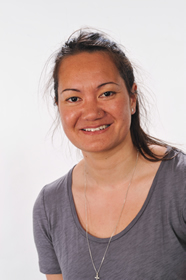 Dr Ella Iosua works as a biostatistician in the Biostatistics Centre, and the experience she gained as a postdoc in the Cancer Society Social and Behavioural Research Unit (SBRU) ensures she is well prepared for the role.
Dr Ella Iosua works as a biostatistician in the Biostatistics Centre, and the experience she gained as a postdoc in the Cancer Society Social and Behavioural Research Unit (SBRU) ensures she is well prepared for the role.
Ella happily recalls her time as a postdoc in the SBRU. "It is a really supportive unit. There is a strong group atmosphere and it is very collegial. I was fully included, also attending their strategic planning day," Ella says. She is very pleased that she now works in the department where the unit is situated.
"SBRU is really appreciative of biostatisticians and totally understands the need to consult with one at the start of a research project to ensure that it is properly designed to answer the researcher's question," Ella explains.
During her time as a postdoc she was involved in four different projects requiring her to use and further develop her biostatistical skills.
One project examined use of the Munsell Color Charts (a less invasive, more economical and practical alternative to the spectrophotometer criterion) as a valid measure of skin colour.
"I also provided some analysis for the Kahungunu Infant Safe Sleep (KISS) study," Ella adds. "This gave me the experience of working on a collaborative project."
The third project looked at the association between consumerism and media use among young New Zealand adolescents and how it affects smoking rates. This research involved the use of complicated structural equation modeling.
Ella also completed some analysis of qualitative data about the role of a biostatistician. "People don't realise how specialised the field is," Ella says. Now providing biostatical consulting to anyone in Health Sciences she knows that anything could come across her desk. From advising at the set-up stage of a research project to the final analysis of data, everyday will be different.
"There is still so much to learn," she says.
"It feels as if an academic career is where I am now," she concludes saying she intends to stay at Otago for a while.